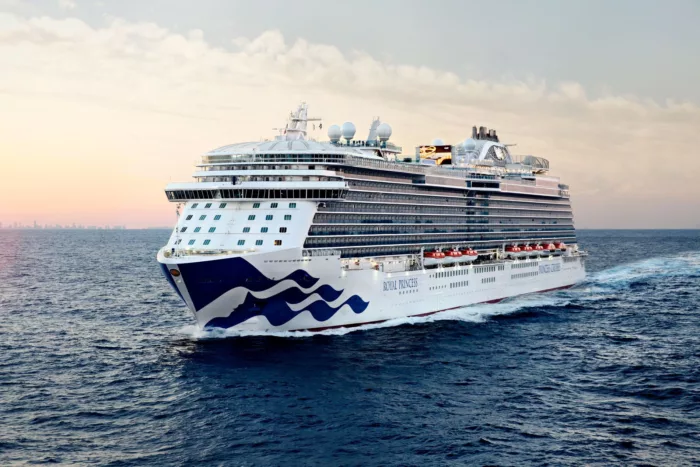
Princess Cruises
Credited with introducing millions of Americans to the concept of a modern cruise holiday, Princess Cruises is still innovating to this day.
Sporting a fleet of 17 ships with capacities ranging from 2,000 to 4,300 passengers, the line is best known for its Alaskan cruises, but travels to destinations the world over.
With an emphasis on destination leadership and local expertise, Princess is an excellent choice for the discerning traveller seeking to sail in comfort.
5189
Passengers
1550
Crew
2024
Launched
175500t
Tonnage
345m
Length
47m
Width
22kts
Speed
17
Decks
USD
Currency
Cruise Itinerary
Days 1 - 2
Istanbul, Turkey
Day 3
Kusadasi, Turkey
Day 4
Mykonos, Greece
Day 5
Khania, Greece
Day 6
At Sea
Relax and make the most of the myriad of facilities available on board the ship, from fantastic entertainment to delicious and diverse dining options.
Day 7
Bar, Montenegro
Day 8
Corfu, Greece
Day 9
Messina, Italy
Day 10
Naples, Italy
Day 11
Civitavecchia, Italy
Day 12
Naples, Italy
Day 13
Messina, Italy
Day 14
At Sea
Relax and make the most of the myriad of facilities available on board the ship, from fantastic entertainment to delicious and diverse dining options.
Day 15
La Spezia, Italy
Day 16
Marseille, France
Day 17
At Sea
Relax and make the most of the myriad of facilities available on board the ship, from fantastic entertainment to delicious and diverse dining options.
Day 18
Málaga, Spain
Day 19
Gibraltar, Gibraltar
Day 20
Cartagena, Spain
Day 21
Palma de Mallorca, Spain
Day 22
Barcelona, Spain

Days 1 - 2
Istanbul, Turkey

Day 3
Kusadasi, Turkey

Day 4
Mykonos, Greece

Day 5
Khania, Greece

Day 6
At Sea

Day 7
Bar, Montenegro

Day 8
Corfu, Greece

Day 9
Messina, Italy

Day 10
Naples, Italy

Day 11
Civitavecchia, Italy

Day 12
Naples, Italy

Day 13
Messina, Italy

Day 14
At Sea

Day 15
La Spezia, Italy

Day 16
Marseille, France

Day 17
At Sea

Day 18
Málaga, Spain

Day 19
Gibraltar, Gibraltar

Day 20
Cartagena, Spain

Day 21
Palma de Mallorca, Spain

Day 22
Barcelona, Spain
Ship Details


Princess Cruises
Sun Princess
Come feel the love on the cruise vacation of your dreams. Because here, the sun revolves around you.
Cabins
All Prices






















